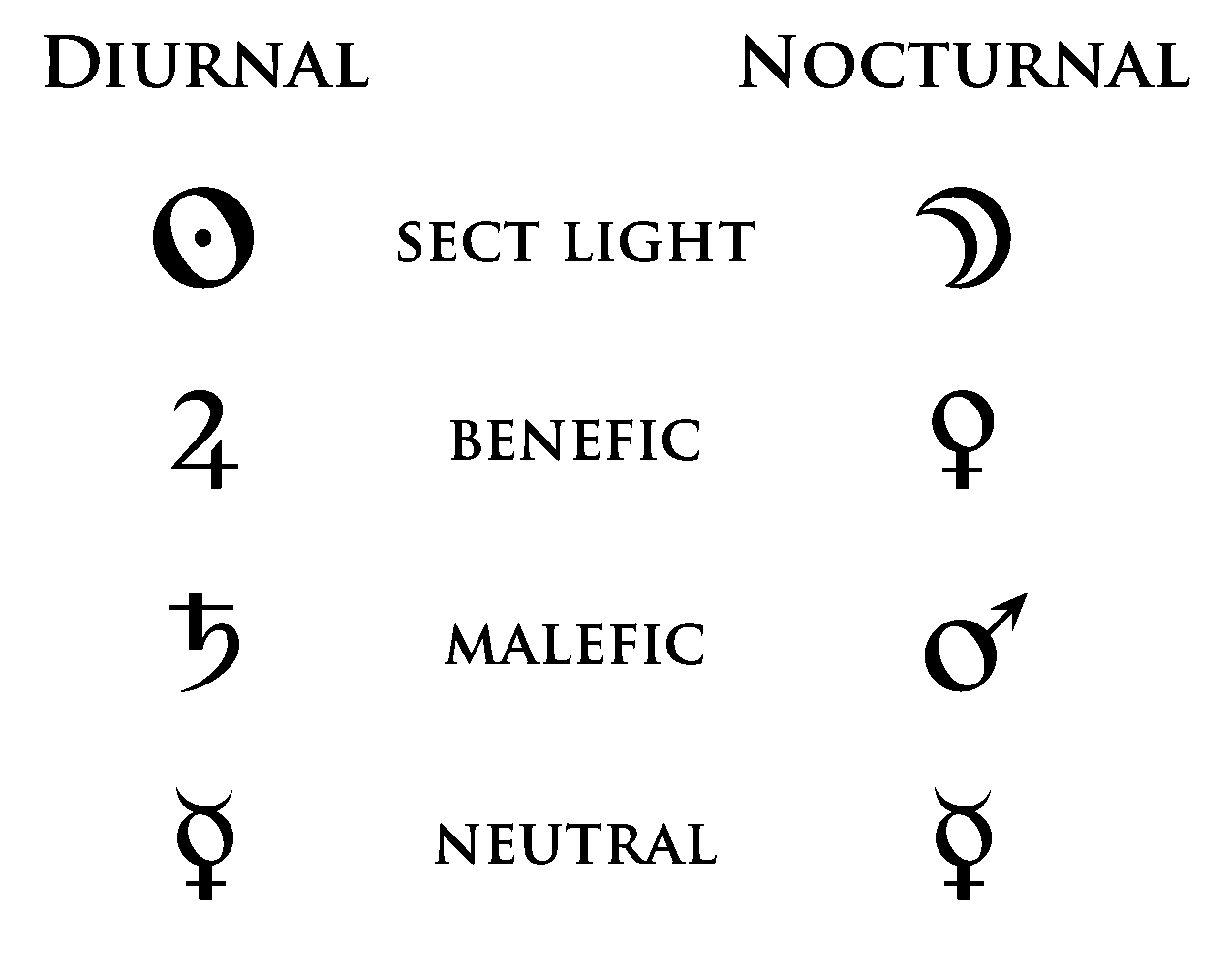Sect,
One of the most fundamental concepts in Hellenistic astrology is the distinction between day and night charts, which is known as "sect." From a practical standpoint, sect is a qualitative distinction that primarily alters the way that the benefics and malefics function in a given chart. It becomes a large part of the reason why the benefics are not always seen as functioning in fully positive ways, as well as why malefics are not always viewed as entirely negative

One of the first considerations in any Hellenistic chart interpretation is to determine the overall sect of the chart by ascertaining whether the person was born during the day or at night. If a person was born during the day, then we would say that they have a diurnal chart, while if they were born at night we would say that they have a nocturnal chart.

Sect is primarily a qualitative factor that alters the benefic or malefic character of a planet in a chart, rather than a quantitative factor that alters how strong or prominent a planet is.
Distinction sets up a spectrum for the benefics and malefics that changes depending on whether they are placed in a day or night chart. In a day chart the most positive end of the benefic spectrum is represented by Jupiter, while the most negative end of the malefic spectrum is represented by Mars; Venus and Saturn falls towards the middle or more moderate part of the spectrum.
Rejoicing Conditions,
diurnal planets want to be on the same side of the horizon as the Sun while nocturnal ones want to be on the opposite side. This was termed “halb” meaning half and is another consideration worth exploring. Is a diurnal planet that is in sect (i.e. by day) made less benefic if it is in a nocturnal sign and under the horizon? More work is needed in this area.

Masculine and Feminine
Fire and air signs are diurnal and masculine, while earth and water one are nocturnal and feminine.
When we have a masculine planet, it prefers to be in a masculine sign and, conversely, the female planet prefers a female sign. Because Mercury is a neutral planet, and therefore when it is an oriental planet we can consider it a masculine planet and vice versa when it is an occidental planet it is feminine.
